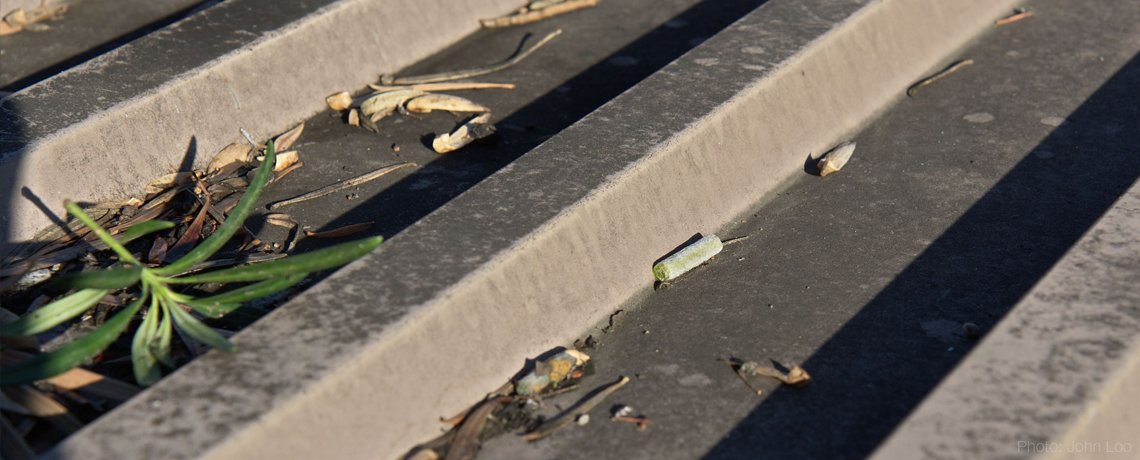Roof debris, yep, we know what you’re thinking: Where does all that stuff come from? We wonder the same thing ourselves when we see the amount of roof debris that can accumulate on top of a roof in just six months. While it certainly takes away from the appearance of your home, roof debris also can be very dangerous if left up there too long.
What Is Roof Debris?
Roof debris is everything and anything that lands on your roof and stays there. It could be leaves, tree needles, twigs, pinecones, seeds, acorns, trash, nesting materials, Frisbees®, or any other lawn game component or children’s toy.
Most roofing debris gets on your roof during a windstorm or could even be carried by birds or squirrels.
Why Roof Debris Needs To Be Removed
Debris on a roof can cause some pretty significant problems to your roofing system if not removed promptly. Some examples of roofing damage we’ve seen happen because roof debris was not removed include:
- Interior Water Leaks – Small debris, like twigs, decaying leaves, or children’s toys, can interfere with gutter performance. Debris-blocked gutters are incapable of deflecting water off your roof and away from your home. As a result, overflowing water can leak into your home, particularly its foundation, and create water spots in your basement, or on ceilings and walls. Additional problems can occur if debris is blocking roof vents or other rooftop ventilation.
- Moss and Mold – Damp debris in corners and valleys of your roof or on the side of the roof that doesn’t get much sun is the catalyst for mold, algae, mildew, or moss growth, all of which can quickly spread to other areas of your roof. All four can cause roof rot because they trap water and create moisture that softens and weakens roofing materials. In addition, roof fungus causes water to run backwards beneath the roof’s shingles, creating roof leaks that enter the interior of the home.
- Roof leaks – Tree debris can easily get caught in the edges and valleys of your roof, clogging proper water flow. Once water seeps into the roofing layers under the shingles, roof leaks are sure to follow.
- Nesting - Small animals and birds use the debris as nesting material and move right in. Not only do their droppings spread disease, but their movement scratches away at your roofing materials. They can also get into your crawl space or attic if there are any weak spots on your roof.
- Fire – It takes only a small ember from a firework or a burning fire to ignite dry leaves, tree needles, twigs and other debris on your roof. Even with a fire-retardant roof, debris on a roof is a disaster waiting to happen.
How to Remove Roof Debris
Removing all forms of roof debris is part of the regular roof maintenance provided by the Roofing Annex. While roof debris removal can certainly be do-it-yourself spring cleaning and fall maintenance projects, if you’re skittish about going up on a ladder or are afraid of heights, then call or email us. Our affordable roof maintenance services will help you get the most out of your roofing system for many years to come.




